7 must-read books to discover the Royal Navy in the First World War
6-7 minute read
By Charlotte Ward Kelly | November 7, 2022

Did your ancestors serve in Britain’s Royal Navy during the First World War? Perhaps they were at Jutland or took part in convoy missions across the Atlantic. This list, compiled by in-house expert Charlotte Ward, includes some of the must-read books about the Royal Navy during World War 1.
During the First World War, over 800,000 men served in Britain’s Royal Navy. This remarkable fighting force was largely made up of seamen and officers that were employed by the navy or had been part of the Royal Naval Reserve or the Royal Naval Volunteer Reserve. These were volunteer forces made up of skilled and experienced mariners who could be called upon in times of war to help bolster the Royal Navy’s numbers.
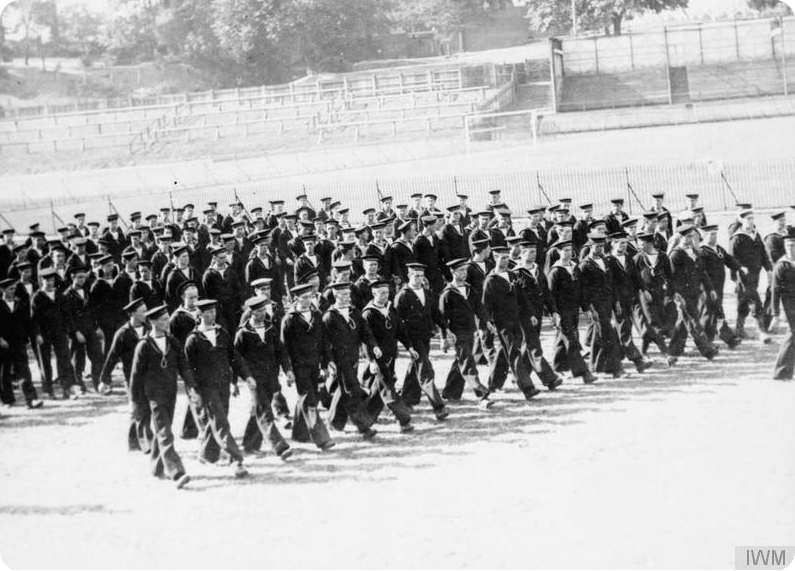
The Royal Navy Volunteer Reserve parade at a football ground in Crystal Palace, 1914.
The Royal Navy was primarily based in the North Sea, carrying out blockade operations, policing and protecting trade routes and merchant ships, and defending Britain’s coastline. However, some ships carried out convoy and supply missions across the Atlantic and to the Mediterranean, Baltic, and Black Sea. Major naval battles included Heligoland, Dogger Bank, and, arguably one of the most famous sea battles in history, Jutland.
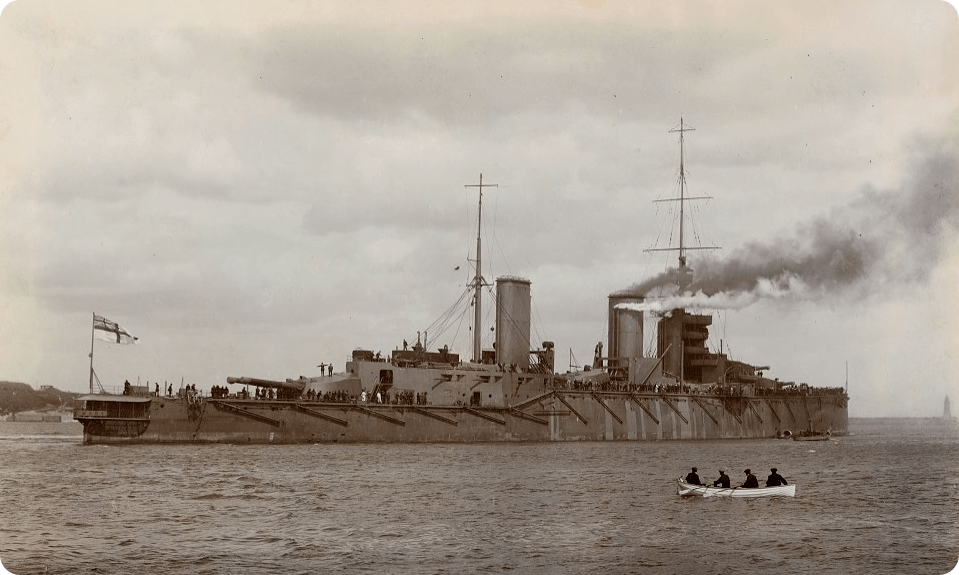
HMS Queen Mary leaving Palmer's Shipyard, 1913. She was sunk in 1916 at the Battle of Jutland.
Your ancestor may have been in the Royal Navy or in the Royal Naval Reserve forces. You may also have ancestors who fought, served, worked, or journeyed on merchant vessels or who worked at the shipyards, building and repairing ships.
This list of books, presented in no particular order, will give you an excellent overview of the role of Britain’s Royal Navy during the First World War as well key aspects of naval warfare and the experiences of the sailors who fought.
1. A History of the Royal Navy: World War One by Mike Farquharson-Roberts
Part of the history of the Royal Navy series of books, this addition by Mike Farquharson-Roberts gives readers an excellent overview of the important, if often overlooked, role the Royal Navy in the allied war effort during World War 1.
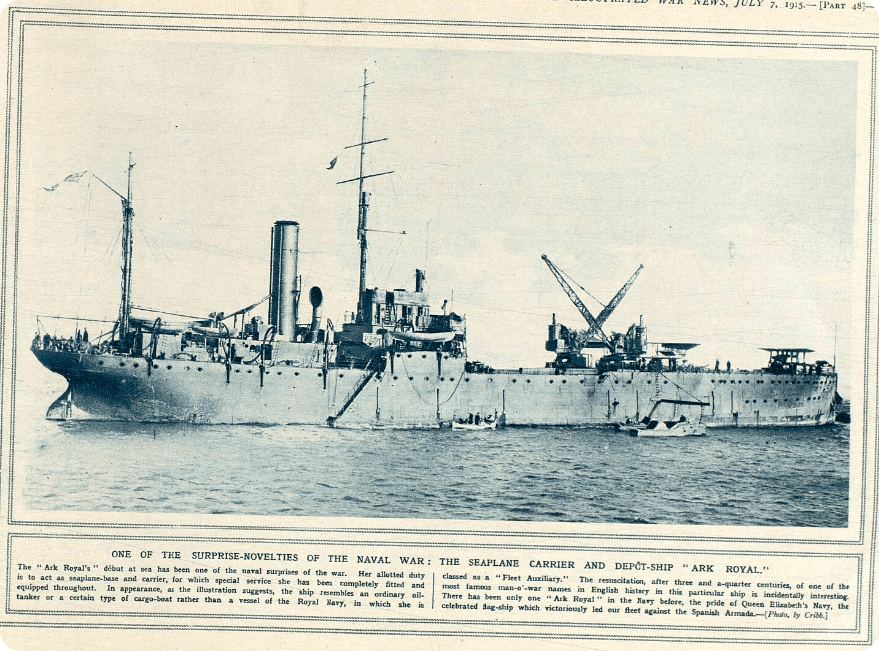
The Ark Royal makes her debut in the First World War, as pictured in the Illustrated War News, 1915.
In addition to the operations and engagements carried out by the navy, Farquharson-Roberts explores developments in technology and engineering including the development of submarines and aircraft. This is a very accessible and engaging read, perfect for your first dive into this part of history.
2. The Grand Fleet 1914-1919 by Daniel G Ridley-Kitts
Britain’s Grand Fleet was formed in 1914. It was made up of around 30 ships and was under the command, initially, of Admiral Sir John Jellicoe, and then Admiral Sir David Beatty. The Fleet was based at Scapa Flow in the Orkney Islands and would carry out patrols and blockades of the North Sea and the Atlantic, carry out checks on neutral ships, and protect the British coastlines.
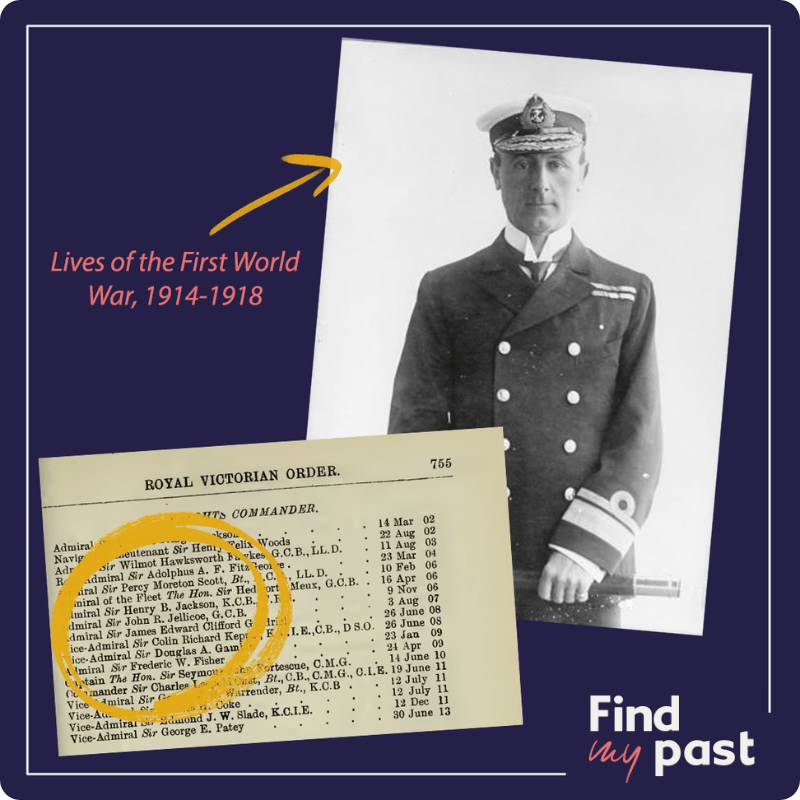
Admiral Sir John Jellicoe in the Lives of the First World War 1914-1918 collection, alongside his service record found in Britain, Royal Navy, Navy Lists 1827-1945.
It was considered one the world’s foremost fleets and war machines and saw action at the Battle of Jutland in 1916. Ridley-Kitts explores the origins and history of the Grand Fleet, the integral role of Admiral Jacky Fisher in the modernisation of the navy, the ground-breaking engineering of the new Dreadnought class ships, and how Britain’s Royal Navy was vital to ensuring an allied victory in 1918.
3. Jutland 1916: Death in the Grey Wastes by Nigel Steel & Peter Hart
The Battle of Jutland, fought 31 May – 1 June 1916, was the most significant naval battle between the British and German navies during the First World War. After years of being engaged in a naval arms race, both the British and the Germans wanted a decisive battle that would establish who had command of the seas. Jutland, however, had no clear victory and thousands of men were killed or wounded on the grey wastes of the North Sea.
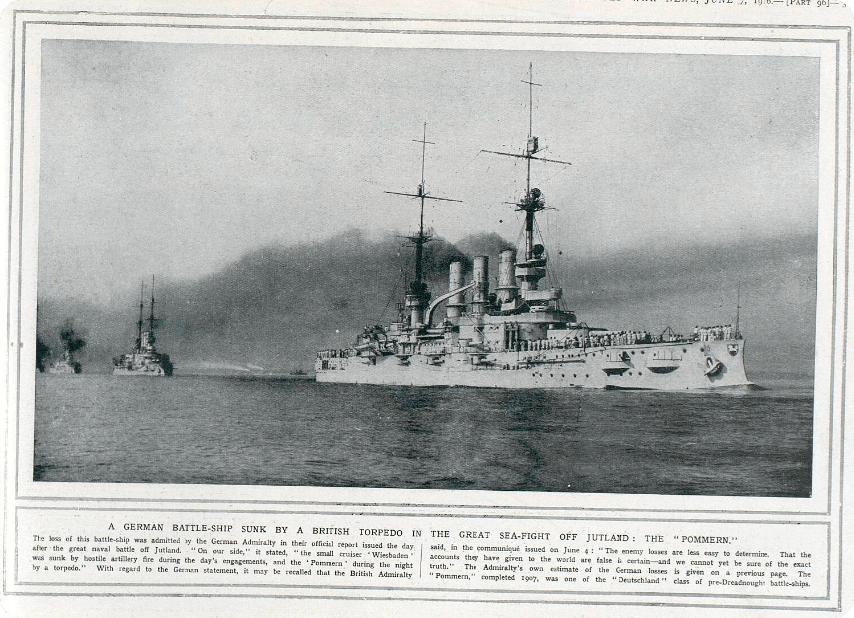
'A German battleship sunk by a British torpedo in the great sea-fight of Jutland', featured in the Illustrated War News, 1916.
Jutland 1916, released around the centenary of the battle, puts the men who fought and died, on both sides, at the heart of the story. Steel and Hart use diaries, letters, oral histories, and first-hand accounts to bring the horrors of battle to life. My great-grandfather served in the Royal Navy and was at the Battle of Jutland.
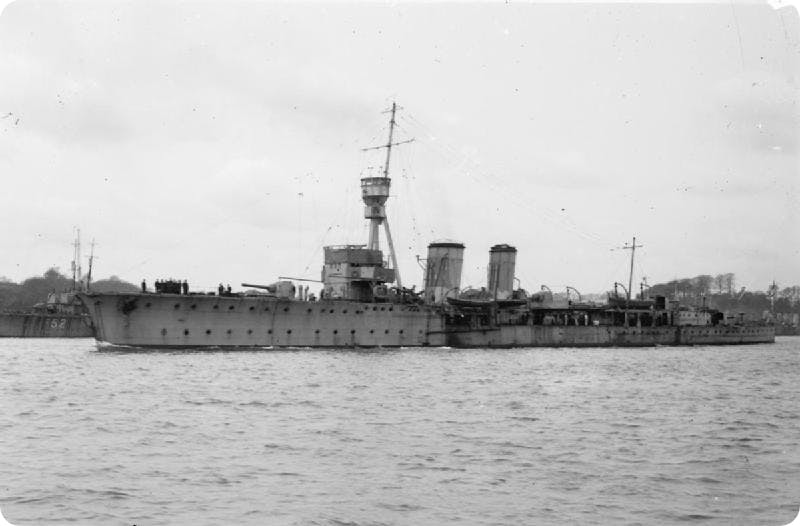
HMS Constance, the ship my great-grandfather was on at Jutland.
For me, this book helped to bring me closer to the great-grandfather I never knew and understand his experiences of naval life and battle. You can search for your Jutland ancestors here.
4. Able Seamen: The Lower Deck of the Royal Navy 1850-1939 by Brian Lavery
Though this will not be the case for all, many who served in Britain’s Royal Navy during World War 1 would likely have been serving in the navy before and after the war, as professional seamen. This was because the navy required skilled and experienced personnel to work the ships and so men were not conscripted into the navy as they were the army. An able seaman, historically, was a seaman who had more than two years’ experience at sea and was, therefore ‘well acquainted with his duty’. Prior to being an able seaman, a new recruit to the navy might be known as a landsman or an ordinary seaman.
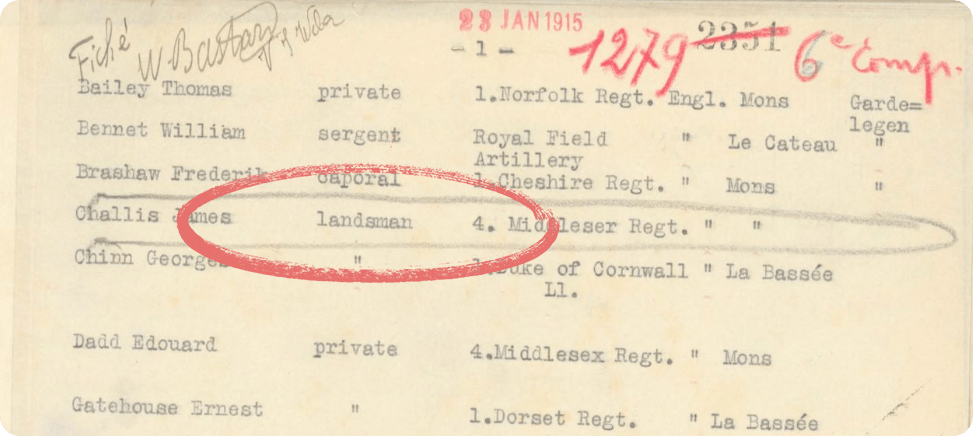
The record of John Challis listed as a Landsman in Prisoners of War 1715-1945.
Brian Lavery explores the history, lives, and role of the ‘able seaman’ from 1850, when these skilled men had to adapt to ships changing from wood and sail to iron and steam, through the First World War and to the eve of World War Two. This is the second of three volumes exploring the lives of these skilled men, and helps to contextualise the seamen that served during the Great War. If your ancestor was an able seaman, Lavery’s trilogy will give you an excellent start to understanding their careers and lives.
5. German Submarine Warfare in World War I: The Onset of Total War at Sea by Lawrence Sondhaus
During World War 1, the German navy adopted the tactic of unrestricted submarine warfare. This meant that they could attack merchant vessels (cargo, tankers etc) without warning. Prize rules were normally followed – giving warning of attack and allowing time for crew and passengers to get to a place of safety before attack.
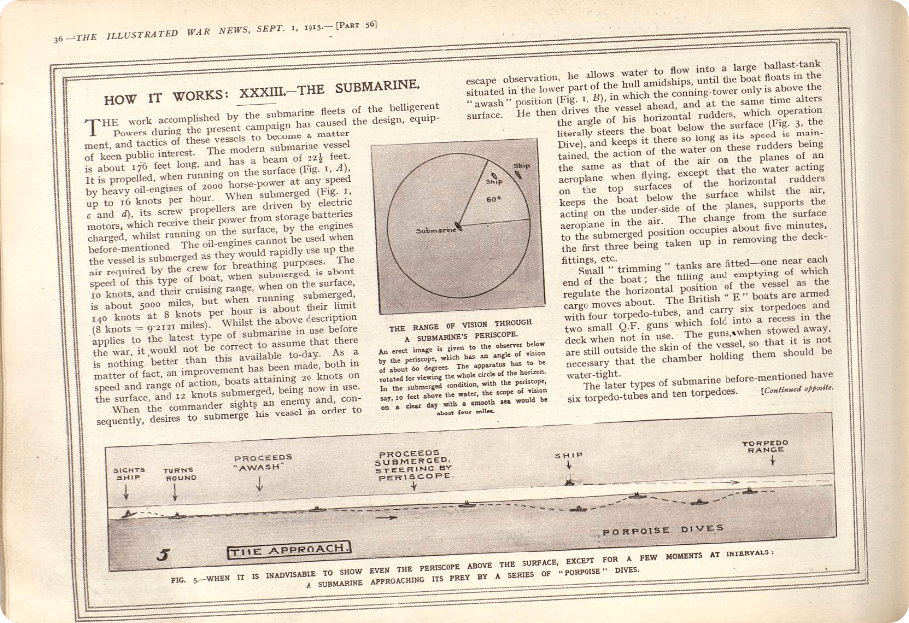
A page in the Illustrated War Times detailing how submarines work through words and diagrams in 1915.
In 1915, a German U Boat sunk the RMS Lusitania, killing 1,198 passengers and crew. The US government demanded that Germany cease this method of warfare which they did, until 1917. This would play a significant contributing factor in America entering the war. Lawrence Sondhaus’s book gives a fantastic insight into the methodology, tactics, and operations of unrestricted submarine warfare and why their decision to start using it again in 1917 was one of the greatest blunders in 20th-century history. Sondhaus uses first-hand accounts and memoirs to attempt to better understand this type of warfare and its impact.
Seamen during the First World War did not just serve in ships, some were in the Royal Naval Division, fighting in the trenches, and some served in the Royal Naval Air Service. The following extra reads will give you a great overview of the seaman’s war beyond the ship.
6. Khaki Jack by E C Coleman
At the outbreak of war, the Royal Naval Division was formed from naval reservists and Royal Marines who were not needed for service at sea. Fighting at Antwerp and Gallipoli, the Division experienced heavy losses at the Somme and were eventually transferred to the Army as the 63rd Division.
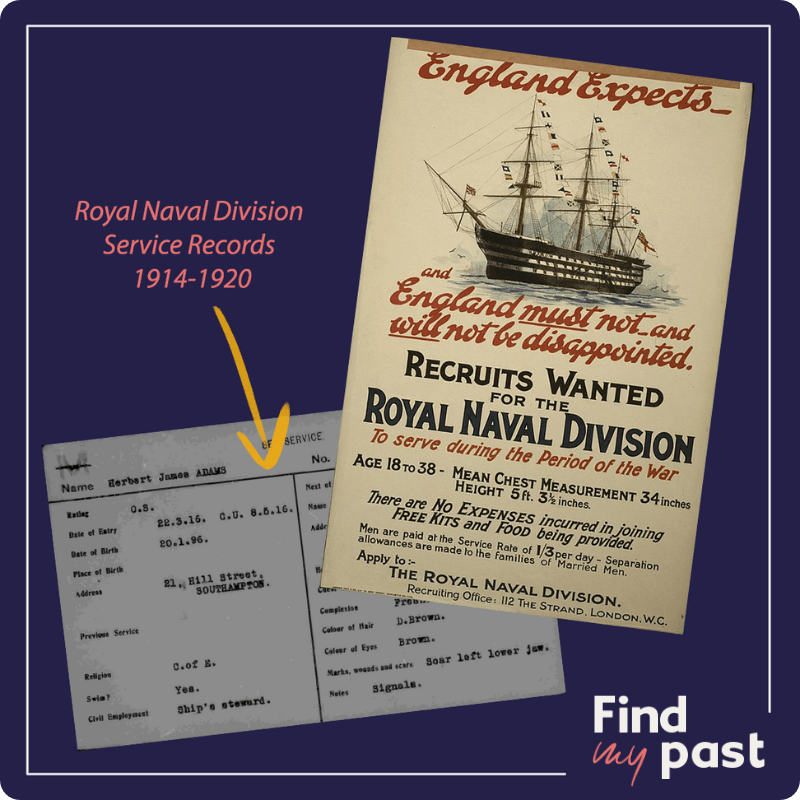
A record from our Royal Naval Division Service Records 1914-1920 alongside a 1915 Royal Naval Division recruitment poster.
Coleman in Khaki Jack explores the history of the Division, from its formation to its eventual disbandment and the experiences of the men, many of whom were trained to serve in ships, as they fought their way across the frontlines of the First World War. Search for your family in our Royal Naval Division Service Records.
7. In the Royal Naval Air Service: Being the War Letters of the Late Harold Rosher to his Family by Harold Rosher
Harold Rosher was born in Beckenham on 18 November 1893. Though quite a sickly child, Rosher enjoyed being outdoors and going on adventures and became a student at the South Eastern Agriculutral College in Wye. At the outbreak of war, Rosher got a commission in the Royal Naval Air Service. Before the outbreak of war in 1914, the Admiralty established the RNAS. Its role was to help protect ships and coastlines, support the army on the Western Front, and carry out tactical bombings of German bases and aircraft. The RNAS and RFC would later combine to form the Royal Air Force in 1918.
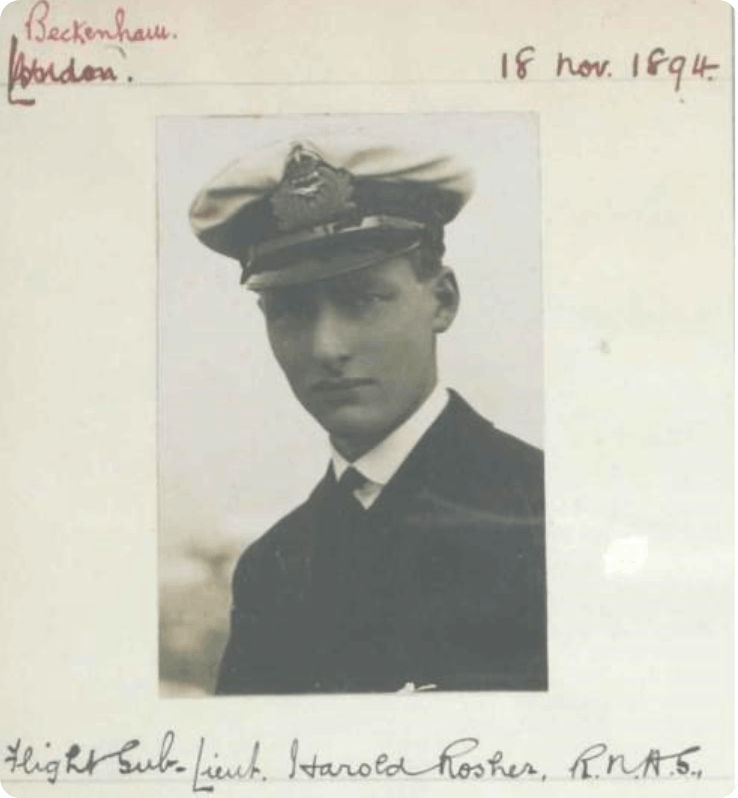
Harold Rosher, pictured in the Lives of the First World War 1914-1918 collection.
Based in Dover, Rosher wrote home regularly to his family telling them about his experiences of training and service. His letters are full of action and humour, of fear and sadness at the loss of fellow airmen, and give us a fantastic insight into this specialist fighting force. Tragically this Rosher was killed in a crash in February 1916 whilst testing a repaired aircraft. His letters were compiled into a book and published a few months after his death.
This is by no means a comprehensive list of literature on the Royal Navy and the First World War, but will certainly provide you with an excellent overview of the role of the navy and the experiences of the sailors who served.
Related articles recommended for you
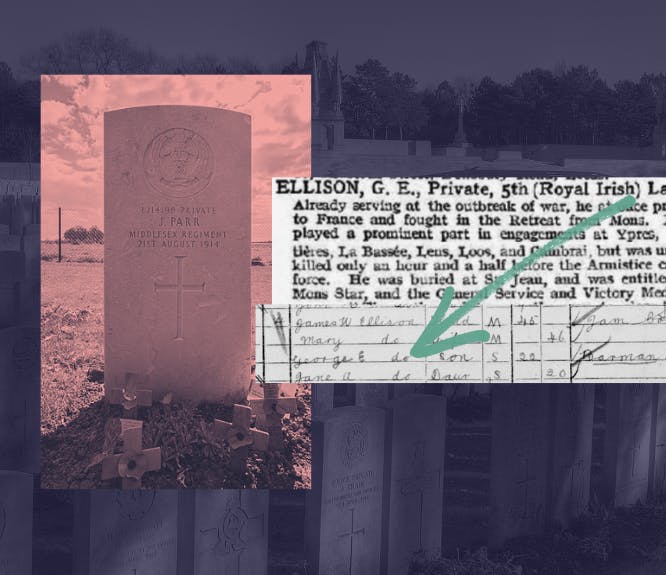
Remember their story: the first and last British soldiers killed in the First World War
History Hub

Who Do You Think You Are? Series 21: here's what you missed
Discoveries
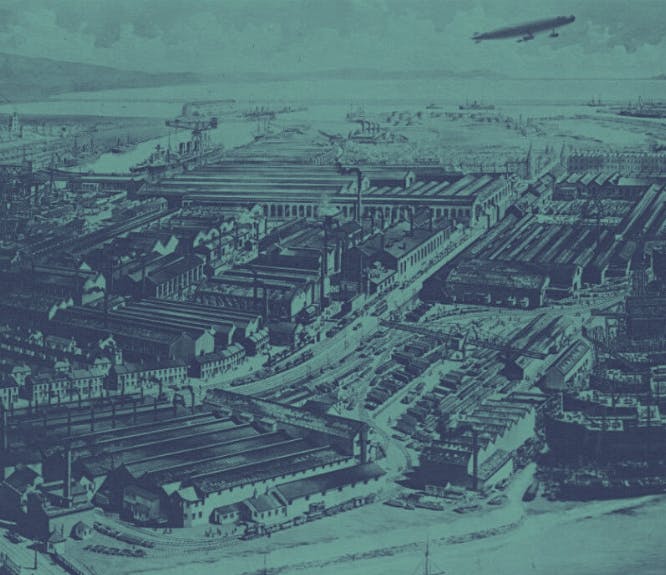
The history of the Barrow-in-Furness Shipyard
History Hub

